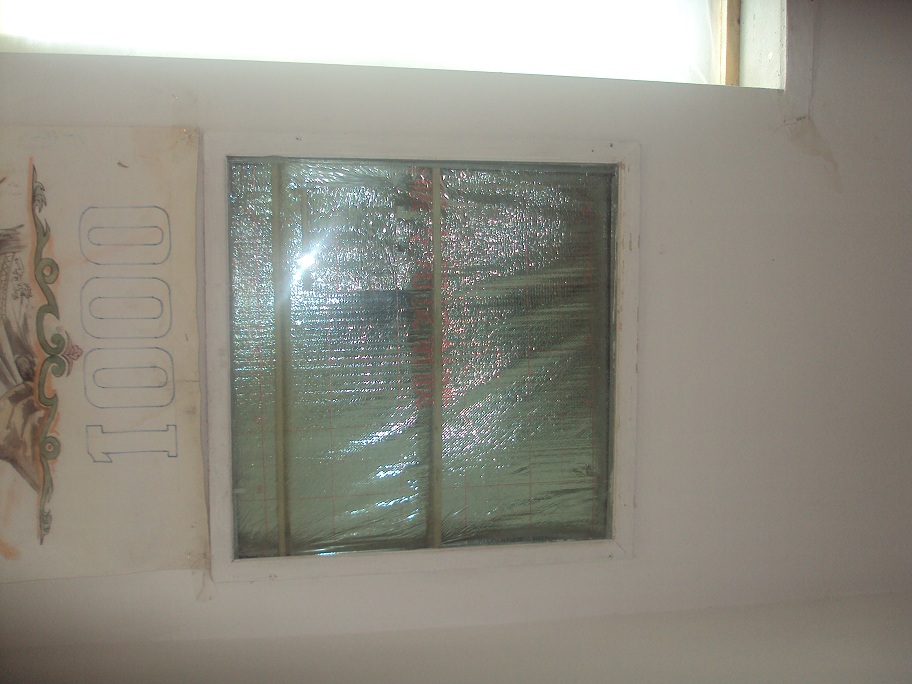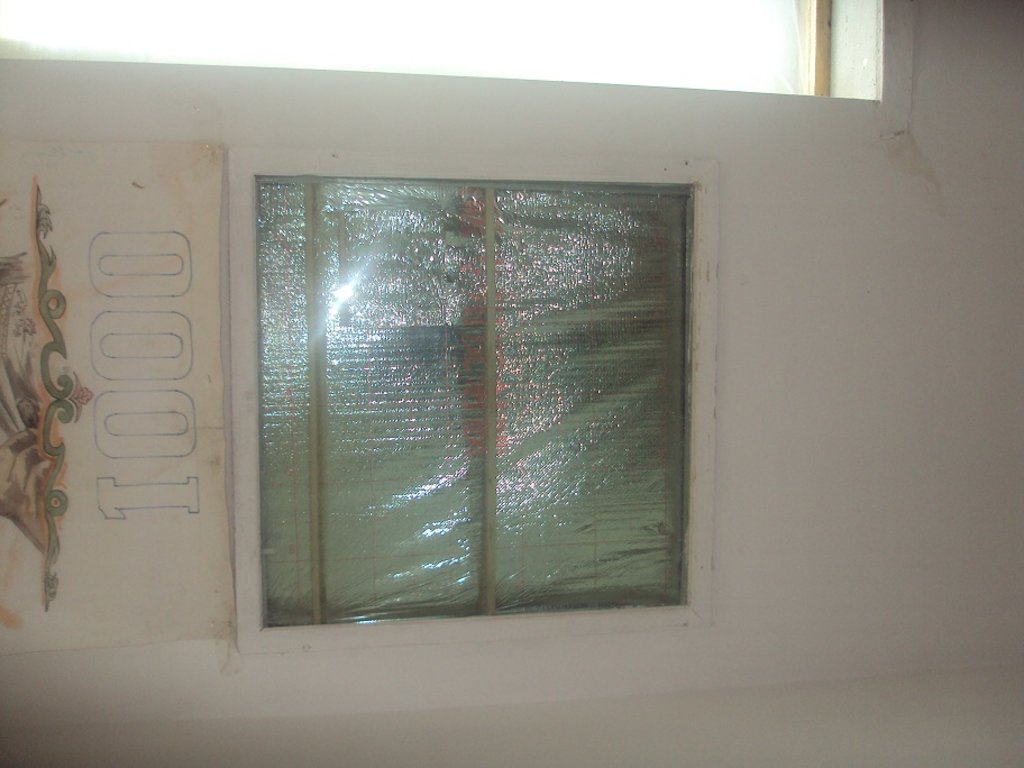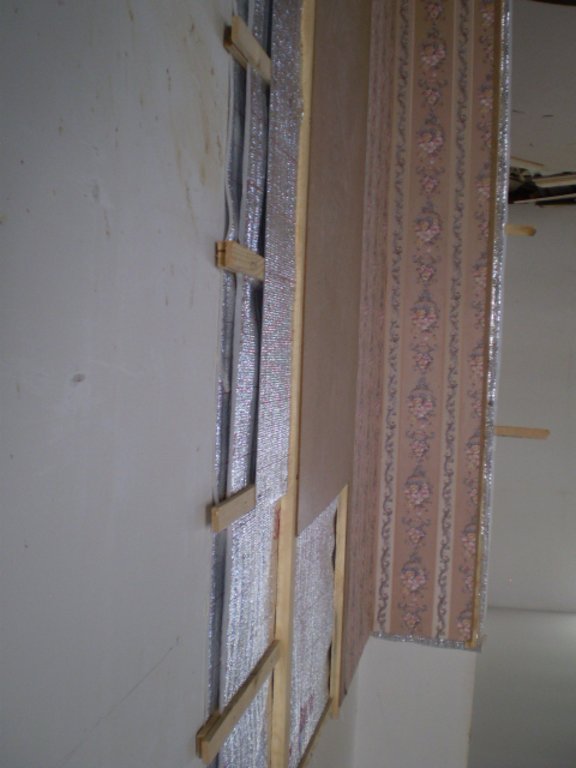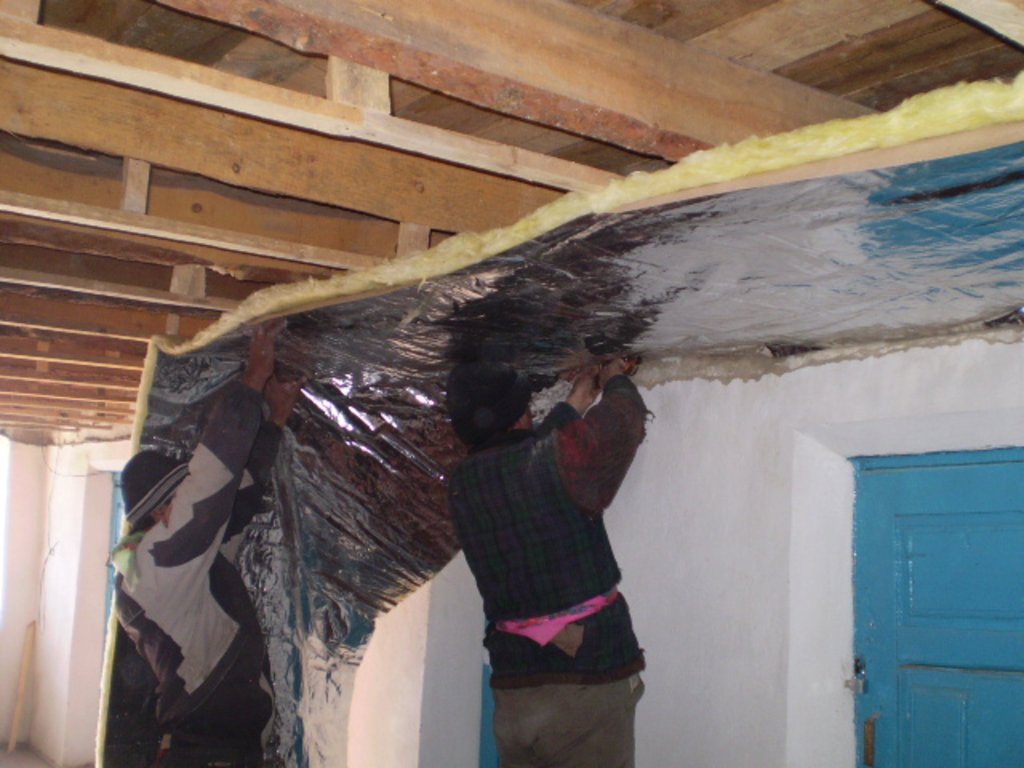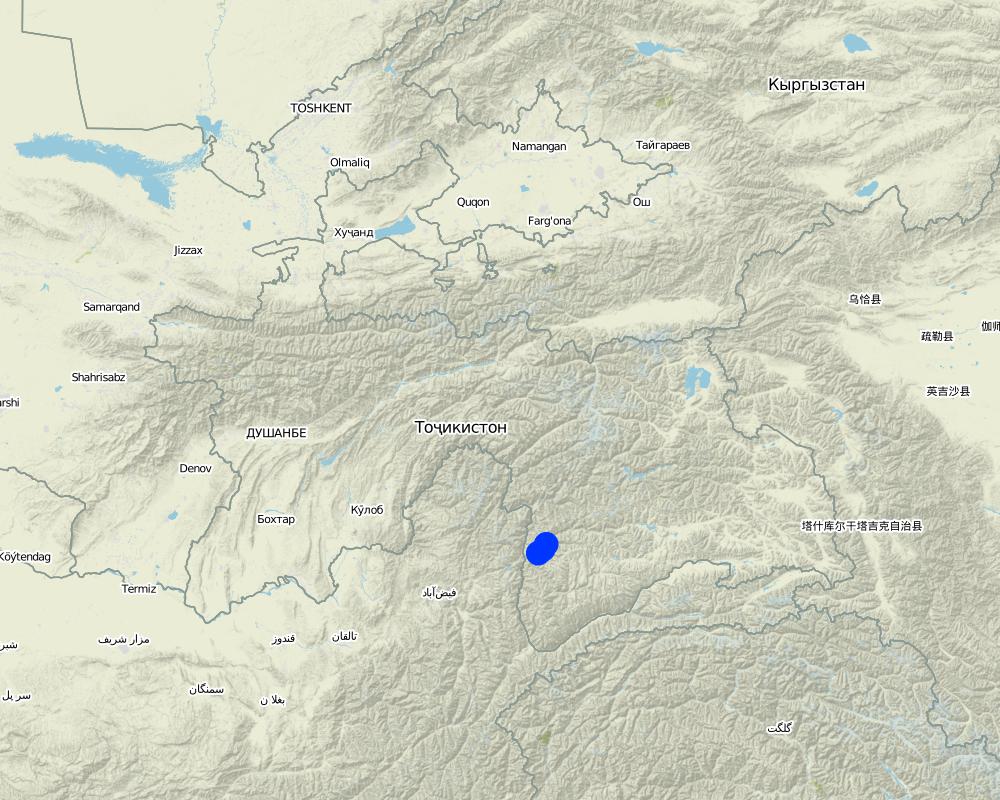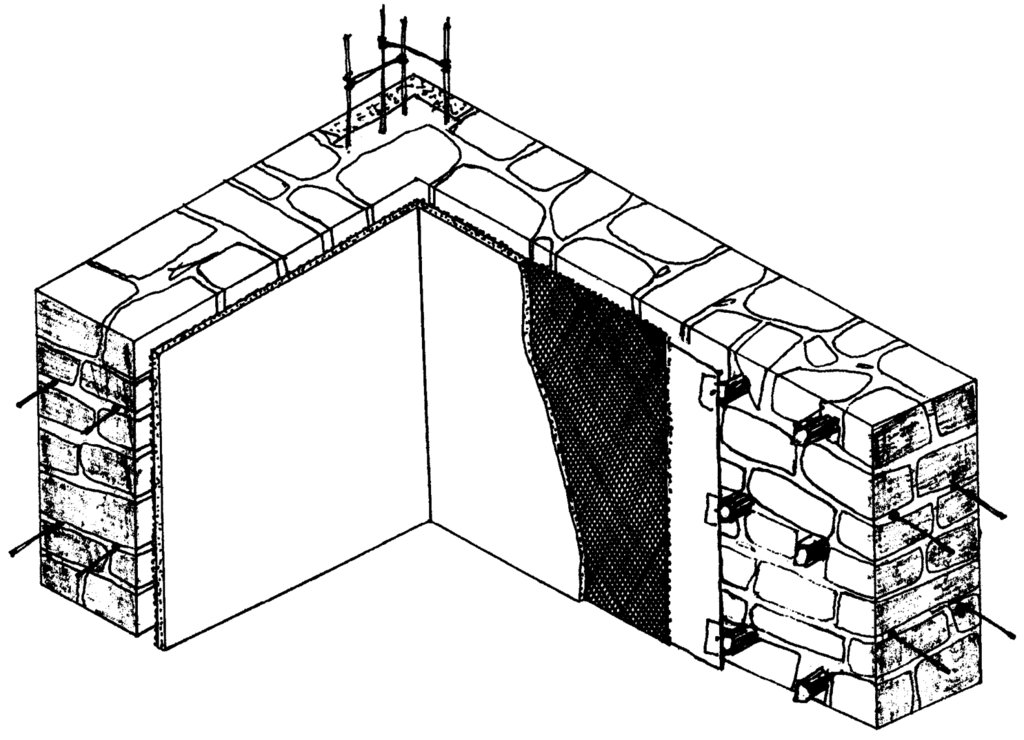Thermo insulation of walls with use of foil to decrease burden on firewood use [Tajikistan]
- Creation:
- Update:
- Compiler: Askarsho Zevarshoev
- Editor: –
- Reviewers: Yacime Khadraoui, Maximilian Knoll, Alexandra Gavilano
Гарминигохдории хонахо ба максади кам гардинаи истифодабарии хезум барои гарм кардани хона
technologies_3465 - Tajikistan
View sections
Expand all Collapse all1. General information
1.2 Contact details of resource persons and institutions involved in the assessment and documentation of the Technology
1.3 Conditions regarding the use of data documented through WOCAT
The compiler and key resource person(s) accept the conditions regarding the use of data documented through WOCAT:
Yes
1.4 Declaration on sustainability of the described Technology
Is the Technology described here problematic with regard to land degradation, so that it cannot be declared a sustainable land management technology?
No
1.5 Reference to Questionnaire(s) on SLM Approaches (documented using WOCAT)
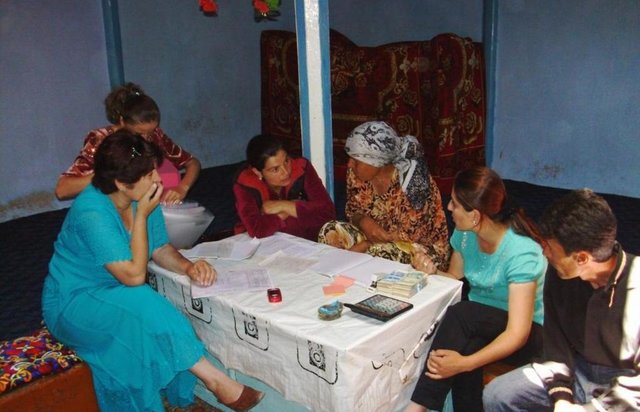
Access to thermal insulation through micro loans [Tajikistan]
Provision of small scale loans for private households to ensure access to thermal insulation (in the frame of CACILM).
- Compiler: Roziya Kirgizbekova
2. Description of the SLM Technology
2.1 Short description of the Technology
Definition of the Technology:
This technology is designed for the high altitude mountains areas, where biomass and growing trees are limited, first because of the harsh climatic conditions and secondly because of the limited arable lands for growing biomass and forests. Thermo insulation is applied in order to keep warmth inside and save using wood and biomass.
2.2 Detailed description of the Technology
Description:
The technology is applied in the mountainous rural areas of Tajikistan, in Rasht, Khatlon and GBAO. In this mountain regions wood and biomass are usually limited because of the harsh climate, risky agricultural zone and limited arable land. In the first decade of the transition period after the collapse of the Soviet Union problems with electricity and therfore the demand for fuel and wood increased. This caused a lot of forest degradation, because people were cutting trees from government owned and community areas for their fuel needs and used animal manure for heating their houses and cooking food. The technology is specifically designed to use low cost materials so that rural households can afford it. The technology consists of material like foil and wood to build frames for some layers to keep in the heat. Depending on the altitude, which is linked to the climate condition, the number of layers is increased where the climate is cold. The layer in between contains air, which prevents outside and inside air to move out/in. The technology was intended for saving up to 30% fuel. The technology includes support of entrepreneurs to make foil available in the market and provides training for local masters and labourers in designing and constructing of the technology. The main benefit is to contribute to biomass savings and forest preservation through reduced use of wood for heating and cooking. Land users are in favour because through this technology they are using less wood and save forest. They also burn less manure and can use it as fertilizers for their land. The technology brings comfort for longer periods of time by keeping heat inside the room. In addition it contribute also to hygine and sanitation, as less fire making prevents smoke emission and therefore keeps the rooms clean. On first sight the technology seems expensive, becasue of the material costs but in the long run when the cost effectiveness is explained land users accepted it.
2.3 Photos of the Technology
General remarks regarding photos:
This technology is applied both on wall, floor and ceiling, where all parts is given more effect, then doing only on part of it.
2.5 Country/ region/ locations where the Technology has been applied and which are covered by this assessment
Country:
Tajikistan
Region/ State/ Province:
GBAO
Further specification of location:
Khorog city
Specify the spread of the Technology:
- applied at specific points/ concentrated on a small area
Comments:
The technology is applied in buildings but have direct effect on preserving woodlands and crop lands.
Map
×2.6 Date of implementation
If precise year is not known, indicate approximate date:
- less than 10 years ago (recently)
2.7 Introduction of the Technology
Specify how the Technology was introduced:
- during experiments/ research
- through projects/ external interventions
3. Classification of the SLM Technology
3.1 Main purpose(s) of the Technology
- reduce, prevent, restore land degradation
- conserve ecosystem
- preserve/ improve biodiversity
- reduce risk of disasters
3.2 Current land use type(s) where the Technology is applied

Forest/ woodlands
- (Semi-)natural forests/ woodlands
- Tree plantation, afforestation
(Semi-)natural forests/ woodlands: Specify management type:
- Selective felling
Tree plantation, afforestation: Specify origin and composition of species:
- Mixed varieties
Products and services:
- Fuelwood

Settlements, infrastructure
- Settlements, buildings
3.3 Has land use changed due to the implementation of the Technology?
Comments:
As a result of applying the technology in big numbers it is contributing to forest preservation and improving crop land conditions.
3.4 Water supply
Water supply for the land on which the Technology is applied:
- mixed rainfed-irrigated
Comments:
both forest, which are mainly growing along the river flowing from the mountians and the open space irrigation is used in this case. In addition an agroforestry system is traditionally common in the technology area, where both tree are grown and the land is cultivated.
Number of growing seasons per year:
1
Specify:
there is only one season for growing, as the winter is very long and the vegetative period is only 5-6 months. traditonally an agro-foresty system is practiced in this area, where both tree are grown and crop land is cultivated.
3.5 SLM group to which the Technology belongs
- natural and semi-natural forest management
- forest plantation management
- agroforestry
3.6 SLM measures comprising the Technology

structural measures
- S10: Energy saving measures

management measures
- M1: Change of land use type
- M2: Change of management/ intensity level
3.7 Main types of land degradation addressed by the Technology

soil erosion by wind
- Et: loss of topsoil

physical soil deterioration
- Pc: compaction
Comments:
when the technology is widely applied, this will prevents tree cutting and forest rehabilitation, which also prevent soil from overgrazing and compaction.
3.8 Prevention, reduction, or restoration of land degradation
Specify the goal of the Technology with regard to land degradation:
- prevent land degradation
Comments:
once the technology is widely introduced it will prevents tree cutting, which also prevents soil degradation.
4. Technical specifications, implementation activities, inputs, and costs
4.1 Technical drawing of the Technology
Technical specifications (related to technical drawing):
A wooden frames is installed on the wall to cover the whole area. Foil will be stretched and will be fixed on the wooden frame on the wall. Based on the need number of layers is selected, which depend on the min/max outside temperature. If required according to the climate and wether of the area and based on altitude another frame from wood will be constructed on the foil and then again another layer of foil will be fixed. The scheme show the frame on the wall with thermo-insulation materials attached to it. The distance between two part of the foil should be an average 2-3sm.
Author:
Khujamyor Khumorikov
Date:
23/03/2011
4.2 General information regarding the calculation of inputs and costs
Specify how costs and inputs were calculated:
- per Technology area
Indicate size and area unit:
1 square meter cost 75
Specify currency used for cost calculations:
- USD
Indicate average wage cost of hired labour per day:
per sequare meter around 2.5 USD
4.3 Establishment activities
| Activity | Timing (season) | |
|---|---|---|
| 1. | Installing of the wood frame | 1 day |
| 2. | attaching/fixing the foil with nail on the wooden frame (add frame and foil layer per need) | 1 day |
| 3. | Cover the structure with clay (mixture of soil and water) as construction material | 2-4 days |
4.4 Costs and inputs needed for establishment
| Specify input | Unit | Quantity | Costs per Unit | Total costs per input | % of costs borne by land users | |
|---|---|---|---|---|---|---|
| Labour | Local master | person | 1.0 | 2.0 | 2.0 | 30.0 |
| Construction material | wood | pe sq meter | 0.5 | 100.0 | 50.0 | |
| Construction material | nail | piece | 20.0 | 0.1 | 2.0 | |
| Construction material | foil | squire meter | 1.0 | 1.0 | 1.0 | |
| Total costs for establishment of the Technology | 55.0 | |||||
| Total costs for establishment of the Technology in USD | 55.0 | |||||
4.6 Costs and inputs needed for maintenance/ recurrent activities (per year)
If land user bore less than 100% of costs, indicate who covered the remaining costs:
for the demonstration sites 100% of the cost is covered by the project implemented by MSDSP
4.7 Most important factors affecting the costs
Describe the most determinate factors affecting the costs:
the cost for the constuction materials in the beginning, because as new technology was introduced foil, as the main product for the technology was difficult to find in the market, which is now commonly sold
5. Natural and human environment
5.1 Climate
Annual rainfall
- < 250 mm
- 251-500 mm
- 501-750 mm
- 751-1,000 mm
- 1,001-1,500 mm
- 1,501-2,000 mm
- 2,001-3,000 mm
- 3,001-4,000 mm
- > 4,000 mm
Specifications/ comments on rainfall:
The technology is applied in high mountain regions of Tajikistan, which are arid and semi-arid zones where some area have less than 100 mm rainfall and in some could be 200-300
Indicate the name of the reference meteorological station considered:
Regional meteorological station GBAO
Agro-climatic zone
- semi-arid
- arid
the whole area of Tajikistan, where the technology is applied is classified as arid or semi-arid agro-climatic zone
5.2 Topography
Slopes on average:
- flat (0-2%)
- gentle (3-5%)
- moderate (6-10%)
- rolling (11-15%)
- hilly (16-30%)
- steep (31-60%)
- very steep (>60%)
Landforms:
- plateau/plains
- ridges
- mountain slopes
- hill slopes
- footslopes
- valley floors
Altitudinal zone:
- 0-100 m a.s.l.
- 101-500 m a.s.l.
- 501-1,000 m a.s.l.
- 1,001-1,500 m a.s.l.
- 1,501-2,000 m a.s.l.
- 2,001-2,500 m a.s.l.
- 2,501-3,000 m a.s.l.
- 3,001-4,000 m a.s.l.
- > 4,000 m a.s.l.
Indicate if the Technology is specifically applied in:
- not relevant
5.3 Soils
Soil depth on average:
- very shallow (0-20 cm)
- shallow (21-50 cm)
- moderately deep (51-80 cm)
- deep (81-120 cm)
- very deep (> 120 cm)
Soil texture (topsoil):
- coarse/ light (sandy)
Soil texture (> 20 cm below surface):
- fine/ heavy (clay)
Topsoil organic matter:
- high (>3%)
If available, attach full soil description or specify the available information, e.g. soil type, soil PH/ acidity, Cation Exchange Capacity, nitrogen, salinity etc.
the area is mountain specified as risky agro-climatic zone for agriculture.
5.4 Water availability and quality
Ground water table:
5-50 m
Availability of surface water:
excess
Water quality (untreated):
good drinking water
Is water salinity a problem?
No
Is flooding of the area occurring?
Yes
Regularity:
episodically
Comments and further specifications on water quality and quantity:
very rare case, but becoming more frequently in the last years, when there is heavy rainy season are becoming more common.
5.5 Biodiversity
Species diversity:
- high
Habitat diversity:
- medium
5.6 Characteristics of land users applying the Technology
Sedentary or nomadic:
- Semi-nomadic
Market orientation of production system:
- subsistence (self-supply)
Off-farm income:
- less than 10% of all income
Relative level of wealth:
- poor
Individuals or groups:
- groups/ community
Level of mechanization:
- manual work
Gender:
- women
- men
Age of land users:
- middle-aged
- elderly
5.7 Average area of land used by land users applying the Technology
- < 0.5 ha
- 0.5-1 ha
- 1-2 ha
- 2-5 ha
- 5-15 ha
- 15-50 ha
- 50-100 ha
- 100-500 ha
- 500-1,000 ha
- 1,000-10,000 ha
- > 10,000 ha
Is this considered small-, medium- or large-scale (referring to local context)?
- small-scale
5.8 Land ownership, land use rights, and water use rights
Land ownership:
- state
Land use rights:
- individual
Water use rights:
- open access (unorganized)
5.9 Access to services and infrastructure
health:
- poor
- moderate
- good
employment (e.g. off-farm):
- poor
- moderate
- good
energy:
- poor
- moderate
- good
roads and transport:
- poor
- moderate
- good
financial services:
- poor
- moderate
- good
6. Impacts and concluding statements
6.1 On-site impacts the Technology has shown
Socio-economic impacts
Income and costs
diversity of income sources
Comments/ specify:
After applying the technology it contributed to 30% of firewood saving, which cost money for the households and community before.
workload
Comments/ specify:
less workload applied, one the house is kept for longer time heated and additional effort is not required to make fire
Ecological impacts
Soil
soil cover
Comments/ specify:
in case the technology is used widely, which prevents extensive forest use to provide soil cover with vegetation
Biodiversity: vegetation, animals
habitat diversity
Comments/ specify:
contributes to saving local trees, which are very few growing in the arid areas
Climate and disaster risk reduction
landslides/ debris flows
Comments/ specify:
after not cutting the trees and reforestation of degraded area, especially in the slope area contributed to land slide prevention
6.2 Off-site impacts the Technology has shown
damage on public/ private infrastructure
Comments/ specify:
one contributing to disaster prevention, like landslide and mudflow also prevents damage to houses and public infrastructure
6.3 Exposure and sensitivity of the Technology to gradual climate change and climate-related extremes/ disasters (as perceived by land users)
Gradual climate change
Gradual climate change
| Season | increase or decrease | How does the Technology cope with it? | |
|---|---|---|---|
| seasonal temperature | winter | decrease | moderately |
6.4 Cost-benefit analysis
How do the benefits compare with the establishment costs (from land users’ perspective)?
Short-term returns:
slightly negative
Long-term returns:
positive
How do the benefits compare with the maintenance/ recurrent costs (from land users' perspective)?
Short-term returns:
slightly positive
Long-term returns:
neutral/ balanced
6.5 Adoption of the Technology
- 11-50%
Of all those who have adopted the Technology, how many did so spontaneously, i.e. without receiving any material incentives/ payments?
- 11-50%
6.6 Adaptation
Has the Technology been modified recently to adapt to changing conditions?
No
6.7 Strengths/ advantages/ opportunities of the Technology
| Strengths/ advantages/ opportunities in the land user’s view |
|---|
| One time investment contributes to long term effects in saving forest and biodiversity, provides comfort without additional cost using for collection/buying firewood. |
| Strengths/ advantages/ opportunities in the compiler’s or other key resource person’s view |
|---|
| The technology contributes to habitat improvement at all, besides conservation of natural resources it also has social effects in terms of reduced smoke emissions as a result of less firewood making, comfortable condition during harsh winter weather. |
6.8 Weaknesses/ disadvantages/ risks of the Technology and ways of overcoming them
| Weaknesses/ disadvantages/ risks in the land user’s view | How can they be overcome? |
|---|---|
| In the short term a big investment is required. | Funding mechanisms should be improved to provide access for farmers/rural population to invest in such technology. Some of the incentive mechanisms should be worked out for replicating the mechanism. |
| Specialized master skills are required to implement the technology. | More capacity building for existing local farmers should be organized at the local level for long term sustainability. |
| Weaknesses/ disadvantages/ risks in the compiler’s or other key resource person’s view | How can they be overcome? |
|---|---|
| By implementing one or two demonstrations at the household level the effect for the purpose of replication and dissemination is very low. | Demonstrations should be applied in public places like school or hospitals so everybody can have access and see the impact. |
7. References and links
7.1 Methods/ sources of information
- interviews with SLM specialists/ experts
2
- compilation from reports and other existing documentation
1
When were the data compiled (in the field)?
31/08/2015
7.2 References to available publications
Title, author, year, ISBN:
Wall Insulation Techniques for Buildings in High Mountain Areas
Available from where? Costs?
from SLM specialist, free of cost
Links and modules
Expand all Collapse allLinks

Access to thermal insulation through micro loans [Tajikistan]
Provision of small scale loans for private households to ensure access to thermal insulation (in the frame of CACILM).
- Compiler: Roziya Kirgizbekova
Modules
No modules


